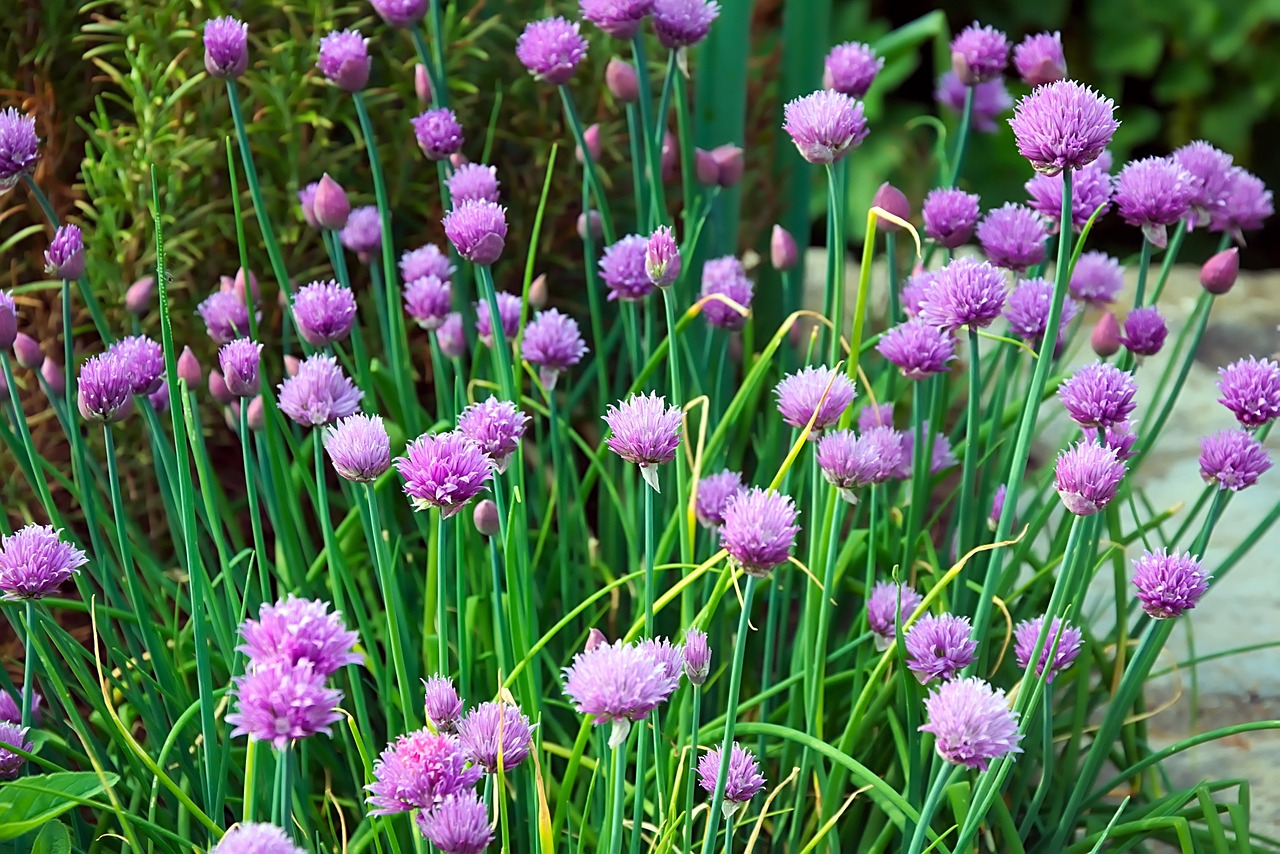
Chives
Allium schoenoprasum
Basic Information
🌿 Family: Amaryllidaceae🗺️ Zone: 3-9
Other Names:
- None
🌡️ Ideal Temperature : 60°F – 70°F
🔥 Heat Tolerance: Up to 95°F
❄️ Cold Tolerance: Down to -40°F
🌱 Type: Perennial
Layers
- Ground
Description
Chives (*Allium schoenoprasum*) are a hardy, drought-tolerant perennial herb belonging to the onion family. They form dense clumps of slender bulbs, each producing hollow, tubular, blue-green leaves that reach heights of 20 to 50 centimeters (8 to 20 inches). In late spring to early summer, chives produce round, pale purple flower heads that are also edible. The plant thrives in well-drained soil rich in organic matter and prefers full sun but can tolerate partial shade. Chives are known for their mild onion flavor and are commonly used in culinary dishes.
🌞💧 **Sun and Water Requirements:**
Prefer full sun exposure but can tolerate partial shade. Require well-drained soil and regular watering to maintain consistent moisture, especially during dry periods. Overwatering or poor drainage can lead to root rot.
✂️🫘 **Methods to Propagate:**
Propagation is commonly achieved through division of clumps in early spring or fall. Seeds can also be sown indoors 6 to 8 weeks before the last expected frost or directly in the garden after the danger of frost has passed. Germination occurs within 14 to 21 days at temperatures between 15 to 20°C (59 to 68°F).
🧑🌾👩🌾 **When to Harvest:**
Leaves can be harvested once they reach a height of 15 centimeters (6 inches). Regular harvesting encourages continuous growth. Flowers are harvested when fully open and can be used fresh in salads or as garnishes.
Purpose
- Edible: Leaves and flowers are edible, commonly used to add mild onion flavor to various dishes such as salads, soups, and sauces.
- Pollinator: Attractive flowers draw bees and other pollinators, supporting garden biodiversity.
- Wildlife Attractor: Provides habitat and food for beneficial insects.
- Pest Management: The strong scent deters pests like aphids and Japanese beetles; planting chives near susceptible plants can offer protective benefits.
- Border Plant: Low-growing habit and attractive foliage make it suitable for edging garden beds and borders.